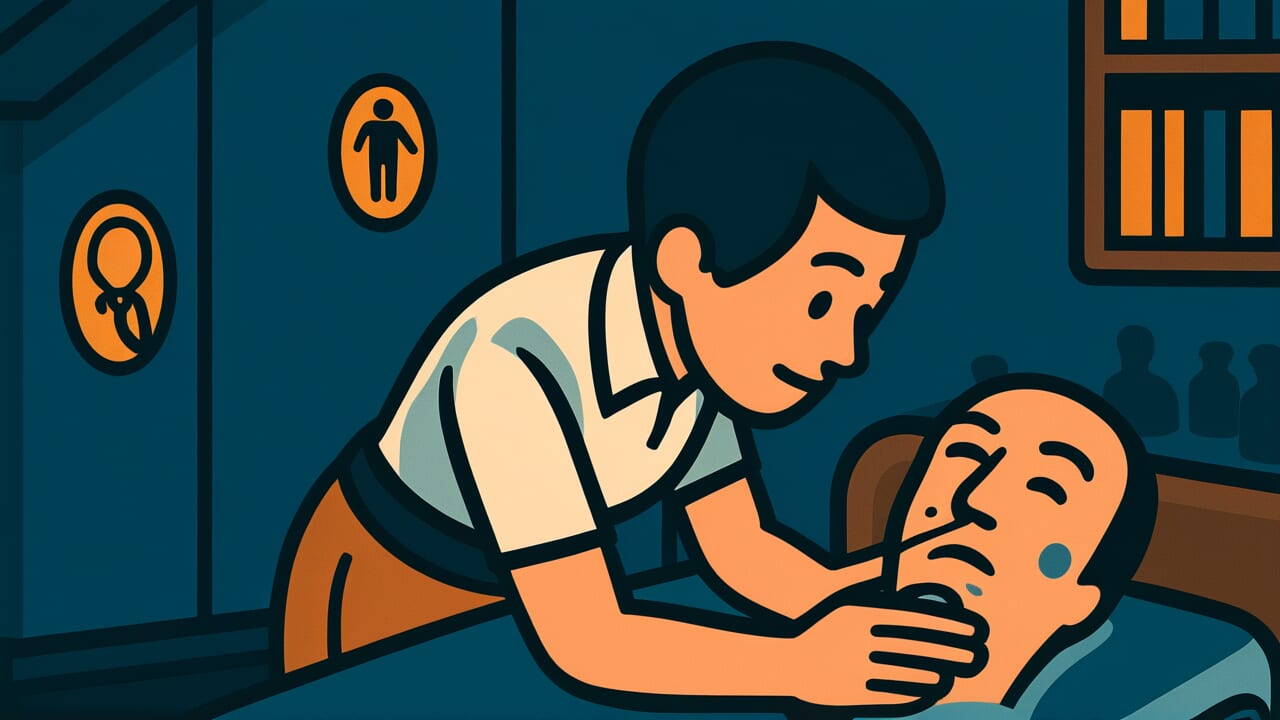How to Read “Using darkness to see a flaw”
Yami wo motte kizu wo miru
Meaning of “Using darkness to see a flaw”
“Using darkness to see a flaw” warns us that trying to find faults in people or things under poor conditions or with biased views will always lead to wrong judgments.
Just as you cannot see a wound accurately in the dark, this proverb teaches the danger of criticizing or evaluating without proper standards or fair perspective.
This saying is used when we need to question whether our judgment standards are correct before pointing out someone’s faults.
It warns against evaluating people when conditions for judgment are not right. This includes times when we are emotional, trapped by prejudice, or lacking sufficient information.
Today, we have more opportunities to judge others through social media criticism and workplace performance reviews.
However, we must constantly ask whether our judgments are based on fair standards. Do we have enough information? Are our own biases interfering?
This proverb still teaches us the importance of viewing things with proper standards.
Origin and Etymology
Clear documentary records about the origin of this proverb are limited. However, we can make interesting observations from the structure of the phrase.
The expression “Using darkness to see a flaw” shows the meaninglessness of trying to find wounds or faults in the dark.
Darkness means a state without light. It represents a situation where conditions for seeing things correctly are not met.
A flaw refers to a wound or defect. These can only be judged accurately under bright light.
The background of this phrase likely shows influence from classical Chinese thought.
The idea that proper conditions and standards are necessary for judgment connects to Confucian and Legalist philosophy.
The principle that correct judgment requires correct methods has been valued by intellectuals in East Asia since ancient times.
This expression also brings to mind medical examination scenes. Ancient doctors could not make accurate diagnoses without sufficient light when examining patients’ wounds.
Some suggest this practical wisdom evolved into a metaphorical lesson. The foolishness of trying to see wounds in darkness became a warning against evaluating people or things with inappropriate methods.
This has been passed down through generations.
Usage Examples
- I should have listened to his plan more carefully before criticizing it. I made a judgment like using darkness to see a flaw
- Evaluating someone when emotional is like using darkness to see a flaw, so I decided to reconsider after calming down
Universal Wisdom
The proverb “Using darkness to see a flaw” reveals a fundamental human weakness.
We all tend to try finding others’ faults even without sufficient information or fair perspective. Why is this?
It’s because we have a defensive instinct to protect our position by pointing out others’ shortcomings.
Finding someone’s weakness lets us look away from our own. Also, wanting to judge even with incomplete information reflects our inability to tolerate uncertainty.
The desire to see things in black and white, to reach answers, creates hasty judgments.
This proverb has been passed down through generations because this human weakness remains unchanged across time.
Ancient people and modern us alike have judged others under insufficient conditions and regretted it.
Yet this proverb also offers hope. It shows that humans have the power to recognize “darkness.”
We have the intelligence to realize our judgments are incomplete. And we can seek light.
We can search for proper standards and strive to hold fair perspectives. This self-awareness and desire for improvement may be the essence of human dignity.
When AI Hears This
The human visual system doesn’t actually measure the brightness of objects themselves.
What the brain does is constantly calculate “differences from surroundings.” For example, the same gray square appears dark against a white background but bright against a black background.
This isn’t an optical illusion but normal brain function.
The phenomenon this proverb describes—”wounds cannot be seen in darkness”—directly addresses this principle.
Wounds and flaws are not absolute properties they possess. They are only recognized through brightness differences with their surroundings.
Neuroscience research shows that retinal nerve cells respond not to “brightness itself” but to “the rate of brightness change with adjacent areas.”
In other words, our eyes are designed as difference detectors.
More interesting is that this principle applies beyond vision. According to psychologist Tversky’s research, people judge good and bad not by absolute standards but by distance from reference points used for comparison.
Satisfaction with an annual income of 5 million yen is high if others earn 3 million, but low if others earn 8 million.
Flaws and strengths don’t exist in isolation. They only have meaning within the context of “what are we comparing to?”
This proverb saw through the core of brain science 2,000 years ago. It recognized that human cognition is a relative difference-processing system.
Lessons for Today
This proverb teaches you the courage not to rush judgment.
We face countless judgments every day. We react instantly to someone’s social media post, evaluate colleagues’ actions at work, and form opinions from news.
But aren’t many of these judgments made “in the dark”?
What matters is pausing before judging. Do I have enough information right now? Am I being emotional? Am I trapped by prejudice?
These questions are never a waste of time. Rather, they reduce the risk of damaging relationships or missing important opportunities through wrong judgments.
This proverb also teaches humility. Your perspective is not absolute. It’s important to keep seeking better judgment standards.
When you want to point out others’ faults, first check your own “light source.”
Is that criticism a fair evaluation from a bright place? Or is it speculation in the dark?
This question will make your judgments more reliable.



Comments